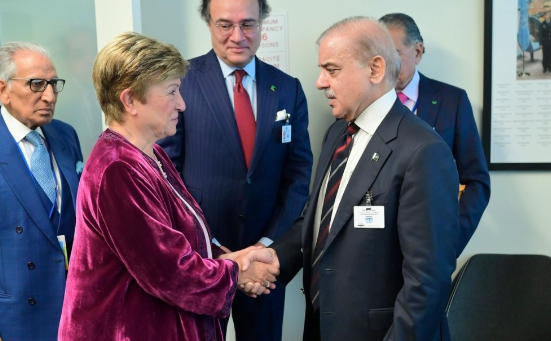Pakistan’s Ongoing Relationship with the IMF
In September 2024, the International Monetary Fund (IMF) approved an important loan for Pakistan. The loan, valued at US$7 billion, marks Pakistan’s second-largest borrowing from the IMF. This financial assistance comes amid ongoing economic challenges faced by the country.
IMF’s Role and Purpose
The IMF provides financial support to countries experiencing economic crises. Its loans are not project-specific but aim to stabilize economies through policy reforms. The IMF promotes sustainable growth for its member countries.
IMF loans require recipient countries to implement specific economic reforms. These include expanding the tax base, managing inflation, reducing subsidies, and stabilizing the currency. Compliance with these conditions is crucial for disbursement.
Temporary Relief Measure
IMF loans serve as temporary relief for balance-of-payments (BoP) crises. They help countries manage immediate financial obligations and avoid defaults. However, these loans are not long-term solutions for underlying economic issues.
Special Drawing Rights (SDR)
The IMF uses Special Drawing Rights (SDR) as an international reserve asset. The value of the SDR is based on a basket of five major currencies. As of November 2024, one SDR equals approximately US$1.32.
Pakistan joined the IMF in 1950. The country faced economic difficulties soon after, leading to its first loan request in 1958. However, it was not until 1965 that Pakistan successfully secured a loan.
Frequent Borrowing Patterns
Since its first successful loan, Pakistan has repeatedly sought IMF assistance. On average, the country requests loans every 2.5 years. It ranks fourth among the IMF’s largest debtors, with an outstanding balance of US$8.8 billion.
Pakistan has struggled to comply with IMF conditions. Of the loans sanctioned, only nine out of 23 have been fully disbursed. This indicates a recurring issue with policy implementation and political stability.
Extended Fund Facility (EFF) and Extended Credit Facility (ECF)
The EFF imposes strict conditions for macroeconomic reforms. It requires countries to focus on revenue generation and market liberalisation. The ECF, aimed at low-income countries, also demands adherence to stringent benchmarks.
Historical Context of IMF Interventions
Past IMF interventions have imposed important constraints on Pakistan. Structural adjustments have included liberalising interest rates and managing budget deficits. These measures reflect a shift from an emerging economy to a lower-income status.
Pakistan’s request for IMF assistance marks ongoing fiscal challenges. Political instability and social issues often hinder compliance with IMF agreements. The need for urgent economic reforms remains critical for the nation’s stability.
Important Facts for Exams:
- Special Drawing Rights (SDR) – SDR is an international reserve asset created by the IMF. Its value is based on a basket of five major currencies. It serves to supplement member countries’ official reserves.
- Extended Fund Facility (EFF): The EFF is an IMF programme designed for countries facing serious balance-of-payments issues. It imposes stringent conditions for macroeconomic reforms to ensure economic stability.
- Extended Credit Facility (ECF): The ECF is aimed at low-income countries experiencing long-term balance-of-payments difficulties. It requires strict adherence to structural benchmarks and policy adjustments to support economic growth.
Month: Current Affairs - November, 2024
Category: Economy & Banking Current Affairs


